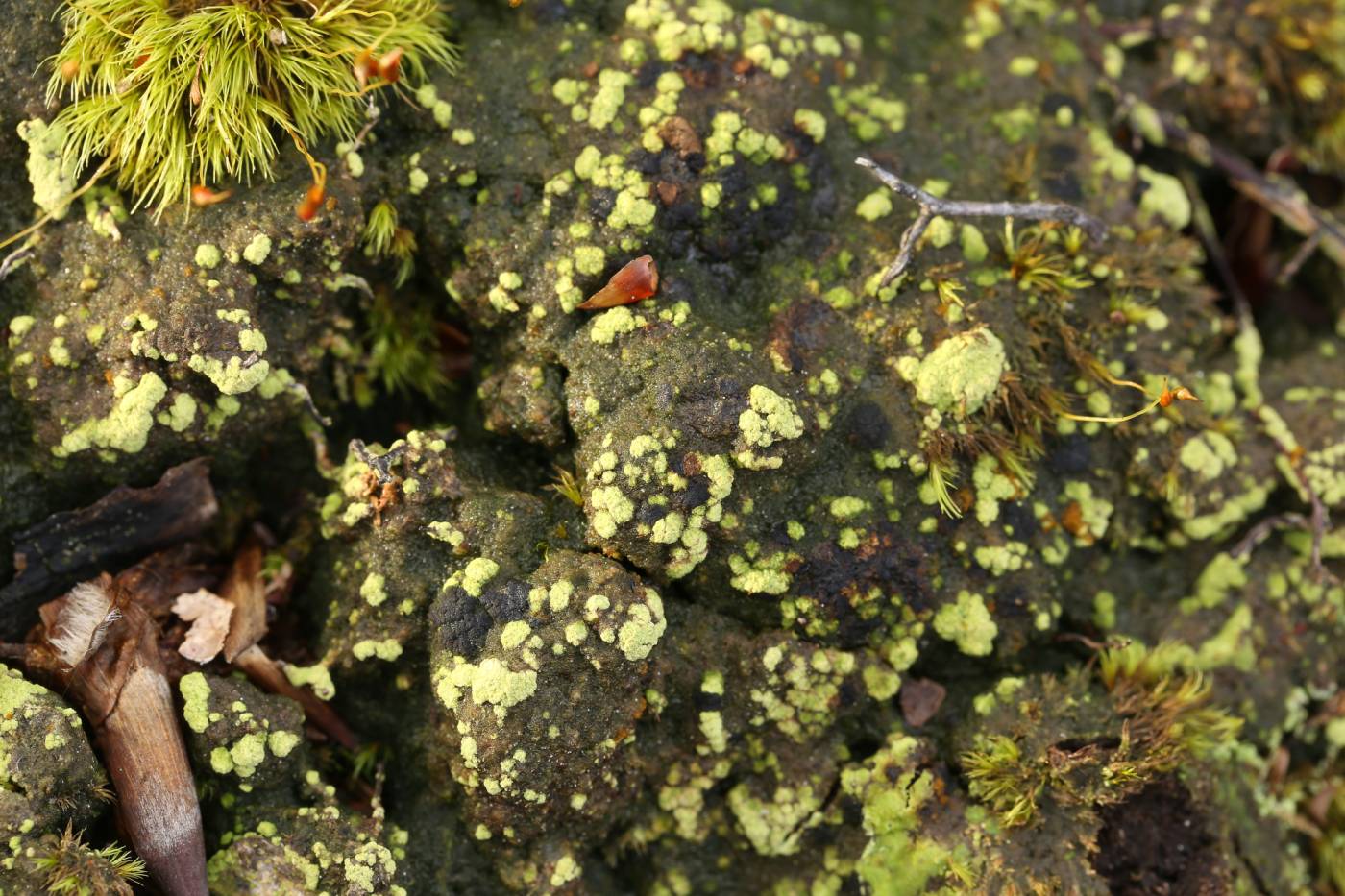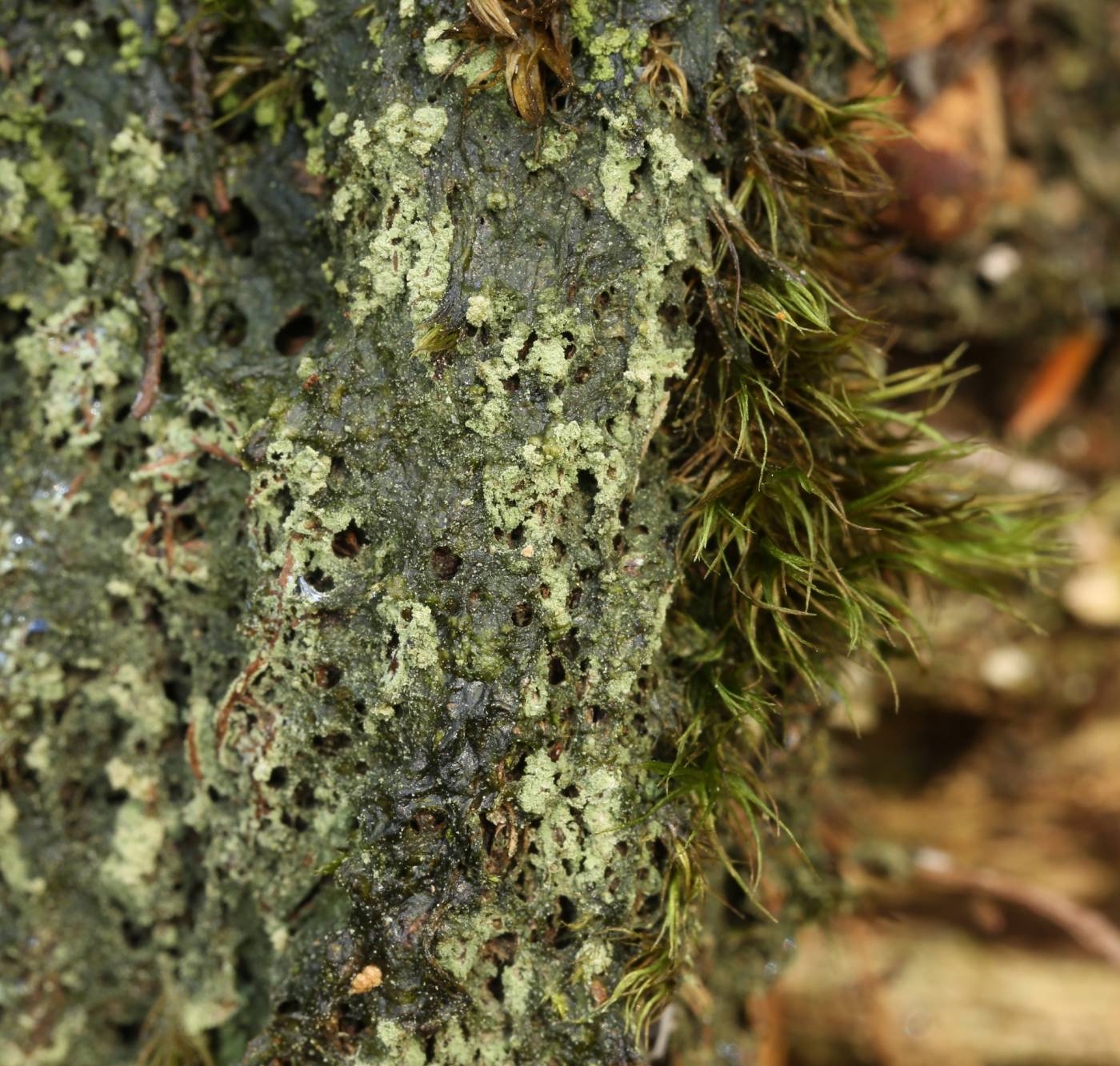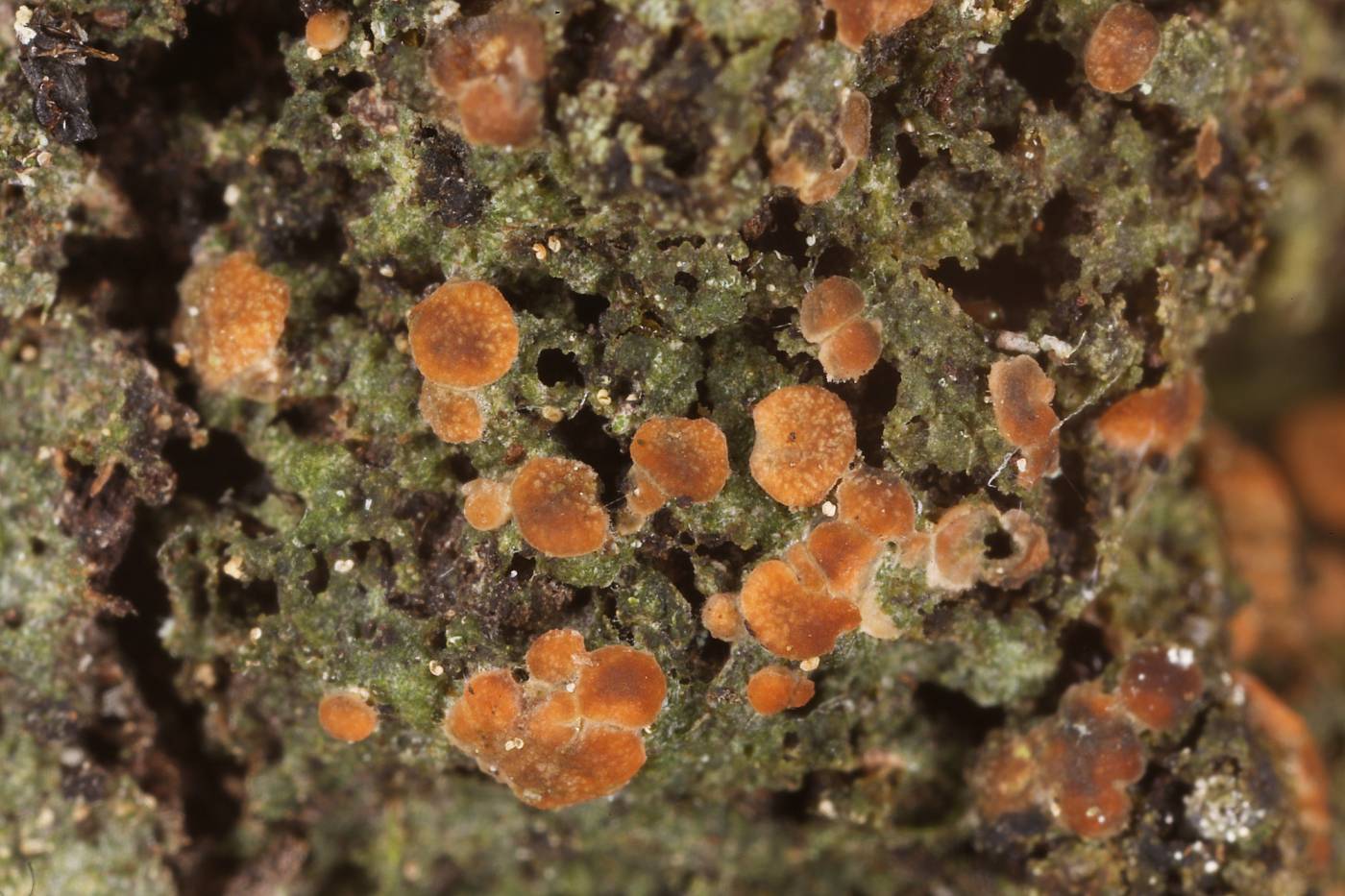A characteristic pioneer species on exposed clayey and sandy soils and other acidic substrates, mainly in forest habitats at higher elevations, but can also be found above the upper treeline. It commonly grows on forest paths, exposed soil around wind-blown trees and exposed tree roots covered with mineral soil particles. In sandstone areas, the species sometimes forms extensive covers directly on exposed rocks. Where abundant, it often forms extensive colonies and also colonises decaying wood, bryophytes, tree bases and stones. This widely distributed lichen has its optimum in forest areas at higher elevations but can be locally also found in lowlands, e. g. in ravines of sandstone rock formations with temperature inversion. It is rare or absent from drier and warmer regions.
Trapeliopsis gelatinosa can be easily confused with similar T. pseudogranulosa and T. viridescens. The three species, all sorediate and subgelatinous when wet, sometimes even grow together. Trapeliopsis pseudogranulosa and T. viridescens, however, contain gyrophoric acid in soralia (C+ red). Trapeliopsis gelatinosa only rarely forms apothecia. Their colour is variable and has no taxonomic importance, as in other species of the genus. However, until recently, forms with red-brown apothecia (missing green pigment) were considered T. aeneofusca.
taxonomic classification:Ascomycota → Lecanoromycetes → Trapeliales → Trapeliaceae → Trapeliopsis
most frequented synonyms:Trapeliopsis aeneofuscaRed List (Liška & Palice 2010):NT – near threatened
Occurrence in the Czech Republic
All records: 139, confirmed 104. One click on a selected square displays particular record(s), including their source(s).



